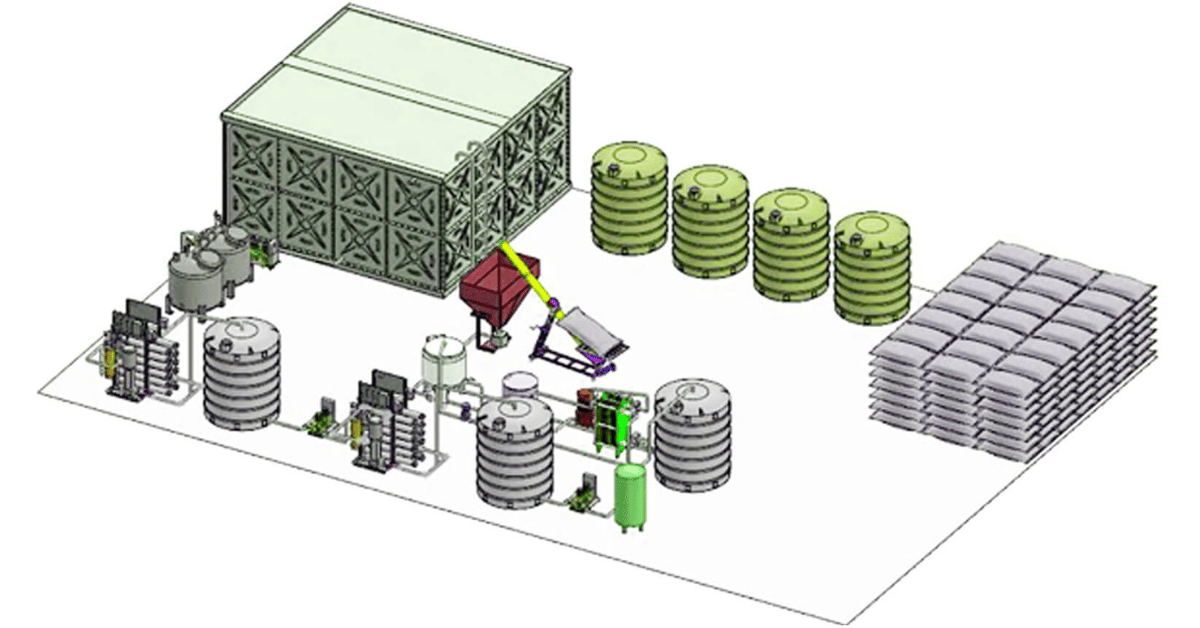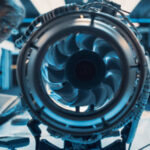Diesel Exhaust Fluid (DEF) making is no longer a niche industrial activity; it’s now a vital part of modern environmental sustainability and fuel technology. If you’re searching for what DEF making means, how it’s made, why it’s important, and where it fits in the larger picture of emissions control, this guide delivers a deep yet accessible explanation. From raw components to the global DEF supply chain, you’ll understand every step that defines DEF making and why it’s rapidly becoming a backbone of cleaner transportation.
Introduction
The environmental pressures on diesel engines have led to regulatory and technological responses—none more prominent than the introduction of Diesel Exhaust Fluid (DEF). But while most discussions center on the use of DEF in vehicles, the process of DEF making is an underexplored field. This article aims to shine a light on the origins, chemistry, infrastructure, and future of DEF production.
What is DEF?
Diesel Exhaust Fluid is a non-hazardous, aqueous urea solution made up of 32.5% high-purity urea and 67.5% deionized water. It’s injected into the exhaust stream of diesel engines equipped with Selective Catalytic Reduction (SCR) systems to convert harmful nitrogen oxides (NOx) into harmless nitrogen and water vapor. This process significantly reduces environmental emissions.
Why is DEF Making Important?
DEFs plays a pivotal role in reducing air pollution, making DEFs production essential for global sustainability efforts. As governments tighten emissions regulations, the demand for DEFs has surged. Manufacturers, fleet operators, and even farmers depend on a steady and reliable supply of this fluid to remain compliant.
Key Ingredients Used in DEF Making
Urea (technical grade, high purity)
Deionized water
Ammonia (intermediate input for urea synthesis)
Biocides (optional, for storage longevity)
Stainless steel processing materials (to avoid contamination)
Each component must meet exacting standards, particularly the urea, which is derived from ammonia and carbon dioxide and requires rigorous purification before use.
The Chemical Process of DEF Manufacturing
The creation of DEF’s less about complex synthesis and more about precision blending and contamination control.
- Urea Production: First, ammonia reacts with carbon dioxide under high pressure to form urea.
- Urea Purification: The technical-grade urea undergoes refining to remove trace elements that could damage catalytic converters.
- Water Purification: Water is deionized to remove minerals that may interfere with SCR systems.
- Blending: The urea and water are mixed in a controlled environment to achieve the precise 32.5% urea concentration.
- Quality Control: Each batch is tested against ISO 22241 standards before packaging.
Modern Facilities and Technologies in DEF Making
Advanced DEFs manufacturing facilities resemble pharmaceutical labs more than chemical plants. The emphasis is on cleanliness, purity, and precision.
Automated blending units
Reverse osmosis and ion exchange systems
Closed-loop mixing chambers
Inline quality control monitors
Stainless steel storage tanks
Technology now allows for remote monitoring, real-time analytics, and adaptive quality assurance, all of which make modern DEFs facilities highly efficient and consistent.
Environmental Benefits
The value of DEFs making goes beyond just pollution control:
Reduces NOx emissions by up to 90%
Improves overall engine performance
Enables compliance with EPA and Euro 6 standards
Facilitates longer engine life through cleaner operation
Lowers healthcare costs associated with poor air quality
By supporting DEFs use, its production directly contributes to healthier cities and global climate initiatives.
Global Demand and Market Expansion
The DEFs market has witnessed exponential growth over the last decade. In the U.S., DEFs consumption has increased with the adoption of SCR systems in commercial trucking. Asia-Pacific and Europe are also expanding rapidly due to rising regulatory pressures and industrial expansion.
Key Drivers
Emission regulations tightening worldwide
Expanding heavy-duty vehicle fleets
Growth in agriculture and construction sectors
Shift toward sustainable fuels
Challenges in DEF Production
Despite its apparent simplicity, DEFs making involves numerous challenges:
Maintaining urea purity
Water deionization at scale
Storage tank contamination
Freezing at low temperatures (below -11°C)
Adulteration risks from unregulated producers
The biggest challenge lies in scaling production while maintaining compliance with ISO standards, especially in developing markets.
The Role of DEF in Emission Standards Compliance
SCR systems paired with DEFs are essential in meeting stringent regulations such as:
EPA Tier 4 Final
Euro 6
BS-VI in India
China VI
DEFs serves as the chemical enabler for NOx reduction. Without it, SCR systems would be ineffective, making DEFs production not only a technical task but a legal necessity in many regions.
Regulatory Oversight and Quality Control
ISO 22241 defines the global standard for DEFs production. Compliance includes:
Maximum aluminum and calcium levels
Biocide concentration limits
Packaging integrity checks
Storage temperature controls
Labeling and transport protocols
Failure to meet standards can result in SCR damage and legal penalties for distributors and manufacturers.
DEF Storage and Distribution
Post-production, DEF’s stored and distributed in temperature-controlled environments to maintain stability.
Storage Considerations
Polyethylene or stainless steel tanks
UV light shielding
Temperature maintenance (between -11°C and 30°C)
Non-contact delivery systems
Distribution typically involves regional blending terminals, tanker trucks, DEFs tote systems, and DEFs pump dispensers at fueling stations.
DEF vs. Other Emission Control Technologies
While DEF and SCR dominate current solutions, they are not the only methods available:
| Technology | Description | Pros | Cons |
|---|---|---|---|
| EGR (Exhaust Gas Recirculation) | Recirculates exhaust gases to reduce NOx | Simple system, fewer components | Less efficient than SCR + DEF |
| DPF (Diesel Particulate Filter) | Captures particulate matter in exhaust | Reduces soot emissions | Requires regular regeneration |
| Dual-Fuel Systems | Combines diesel and gas | Better efficiency and fuel economy | High installation cost |
| Electric Vehicles | No emissions | Clean and quiet | Infrastructure and range limitations |
DEFs remains the most scalable and affordable emissions solution for large diesel-powered applications.
Economic Impact of DEF Making
The DEF industry has created entire economic ecosystems:
New jobs in chemical engineering and transport
Growth in storage and pump infrastructure
Investments in automated blending systems
DEFs distribution networks across continents
Secondary markets for DEFs testing equipment
According to some estimates, DEFs production will become a $20 billion industry by 2030.
DEF and the Automotive Industry
For trucking fleets and commercial vehicle manufacturers, DEFs has become non-negotiable:
OEMs design engines with SCR + DEFs systems
DEFs tank sizes now factor into vehicle architecture
Fleet operators manage DEFs logistics like fuel
Telematics now monitor DEFs consumption
Automotive service centers also now regularly offer DEFs top-ups as part of vehicle maintenance.
DEF in Agriculture and Construction Sectors
Off-road equipment manufacturers are also embracing SCR systems:
Tractors
Harvesters
Excavators
Bulldozers
Because these machines run under load and in emission-sensitive environments, DEFs usage ensures compliance without sacrificing power output.
Future Innovations in DEF Manufacturing
DEFs making is not standing still. Innovations include:
Biologically derived urea (from waste recovery)
Nano-filtration for ultra-pure DEFs
On-site blending stations for large fleets
Smart packaging that detects tampering or contamination
Blockchain traceability to verify source-to-dispenser integrity
As vehicles and regulations evolve, DEF making will also become smarter and more adaptable.
FAQs
1. What happens if DEF is not pure?
Impure DEFs can damage SCR systems, clog injectors, and cause engine performance issues or regulatory failures.
2. Can I make DEF at home?
No. Home-made DEFs typically fails ISO standards and risks damaging your vehicle.
3. Why is the 32.5% urea concentration so precise?
This concentration provides optimal freezing and emission control properties, as determined by SCR system design.
4. Is DEF toxic?
No, DEF’s non-toxic and safe to handle, although it should be stored properly to prevent contamination.
5. Does DEF expire?
Yes. DEFs typically has a shelf life of about two years if stored under ideal conditions.











